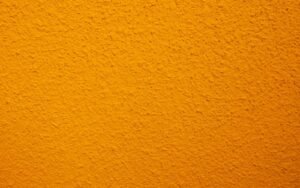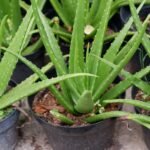Are you working on a DIY home project that involves wall texture or maybe your place is getting a facelift? Then, you’re probably wondering how long does an orange peel wall texture take to dry, right? You’ve come to the right place! In this post, we’ll help you figure out how much time it takes to dry. Additionally, we will break down all the key factors affecting the drying time and tips to dry it quickly. So let’s get started!
Table of Contents
ToggleIs Orange Peel Wall Texture Quick to Dry?
Now, as we know, it is important to dry the wall completely, so the big question is, does the orange peel wall texture dry quickly? The answer: it depends!
- For light textures, yes!
- Thicker applications and joint compounds may need more time.
How Long Does Orange Wall Texture Take to Dry?
Now the orange peel wall texture drying time can vary. Drying speed depends on the product, how thick you apply it, and the environment. Here’s what you need to know:
- Light Textures: Thin layers like orange peel or splatter dry fast—in 5 to 30 minutes. Always check the product’s instructions to be sure.
- Heavier Textures: Thicker finishes like knockdown or skip trowel need more time, often 2-3 hours before you can prime or paint them.
- Joint Compound: If you use joint compound as a base, let it dry for at least 24 hours before you add texture. This helps create a smooth and even result.

Why is Orange Texture Dry Time Important?
Let’s start with the basics before knowing how long it takes to dry and see why you need to dry it. At first, if you jump in and paint before the orange peel texture has completely dried, you might run into a bunch of problems:
- Texture Damage: If the texture is still wet, it can smudge, get flattened out, or even peel off when you’re using a brush or roller.
- Uneven Finish: Mixing up wet texture with paint can leave the surface looking blotchy and all over the place.
- Longer Drying Time: Because of the extra moisture, both the paint and the texture will take forever to dry.
- Mold Risk: Moisture that gets trapped can eventually cause mold or mildew to pop up.
- Streaks and Drips: Wet texture can make the paint streaky or drippy, totally ruining the vibe.
- Poor Adhesion: The paint might not stick properly, which can lead to peeling or flaking later on.
Waiting for the orange peel wall texture to dry completely helps dodge these headaches! However, there are many factors that determine how long your orange texture takes to dry.
What Affects Orange Peel Drying Time?
Now, orange peel wall texture drying time isn’t just about how thick you apply it. This is also more than the paint you chose. Have a look at other reasons too:.
- Temperature: Keeping the room warm helps the texture dry faster, but cooler temps will slow it down. Shoot for 60-80°F (15-27°C) for the best results.
- Humidity: Lower humidity speeds up drying, but if it’s above 70%, the drying process might take longer. Just try to keep it in check.
- Ventilation: Good airflow really makes a difference. Thus, if your room is not ventilated properly, wall texture will take more time to dry and vice versa.
- Texture Thickness: Thicker layers take longer to dry. Make sure to apply an even coat to prevent uneven drying.
- Material Quality: Better-quality materials dry faster since they handle moisture way better.
- Environmental Conditions: If the days are warm and sunny, texture will dry up fast. On the same note, it will take more time to dry if it’s raining!
By considering these factors, you can manage the drying process and achieve a smooth, professional finish without the frustration of rushing or waiting too long.

Tips To Dry Orange Peel Wall Texture Quickly
An oil-based orange texture typically dries pretty quickly, but if you want to make it happen even faster, here are some easy tips to try:
- Use a Texture Sprayer: First off, grab a texture sprayer. It helps apply the texture evenly and speeds up drying. You can totally rent one for big projects or just snag a hopper-style spray gun for smaller jobs.
- Adjust the Water Mix: Next up, tweak the water-to-compound ratio. If you’re using a texture sprayer, you might need to throw in a bit more water than what the instructions say to get the right consistency.
- Turn on Some Fans: Then, switch on some fans to boost airflow. Good ventilation is super important for helping the texture dry faster.
- Lower the Humidity: Also, bring down the humidity in the room. You can do this by using a dehumidifier or turning on the AC to get rid of extra moisture in the air.
- Increase Temperature: Plus, warm air really helps speed things up. Turn up the heat or use a space heater to raise the room temperature.
- Go for Thin Layers: Another solid tip is to apply the texture in really thin layers. Thicker layers take forever to dry, so thinner = faster!
- Use a Dehumidifier: On that note, using a dehumidifier pulls moisture from the air, making the drying process way quicker.
- Keep It Dry: Finally, steer clear of adding more moisture to the room. Stuff like cooking or showering can bring in dampness, which slows everything down.
So, drying orange peel wall texture quickly is possible if you follow these tips and your wall will be ready to roll in no time!
Wrapping Up
Orange peel wall texture totally nails the mix of style and function. Hopefully now you are aware of it’s drying time as well as factors affecting the dry time. Thus, wait a bit before it dries out properly and then start painting. So, what’s holding you back? Grab your gear, check out our tips, and change your walls into something amazing!
FAQ
1. Is it safe to touch the Orange Peel Wall Texture before it’s fully dry?
It’s best to avoid touching the texture until it has fully dried to prevent smudging or damage to the finish.
2. What should I do if my Orange Texture is still wet after 48 hours?
If the texture remains wet after 48 hours, check for high humidity or insufficient airflow. Consider using a dehumidifier and ensure proper ventilation in the area.
3. What is the ideal thickness for Orange Wall Texture?
A thickness of about 0.01–0.0025 meters inch is typically ideal as it ensures the texture is visible without being overly raised.







